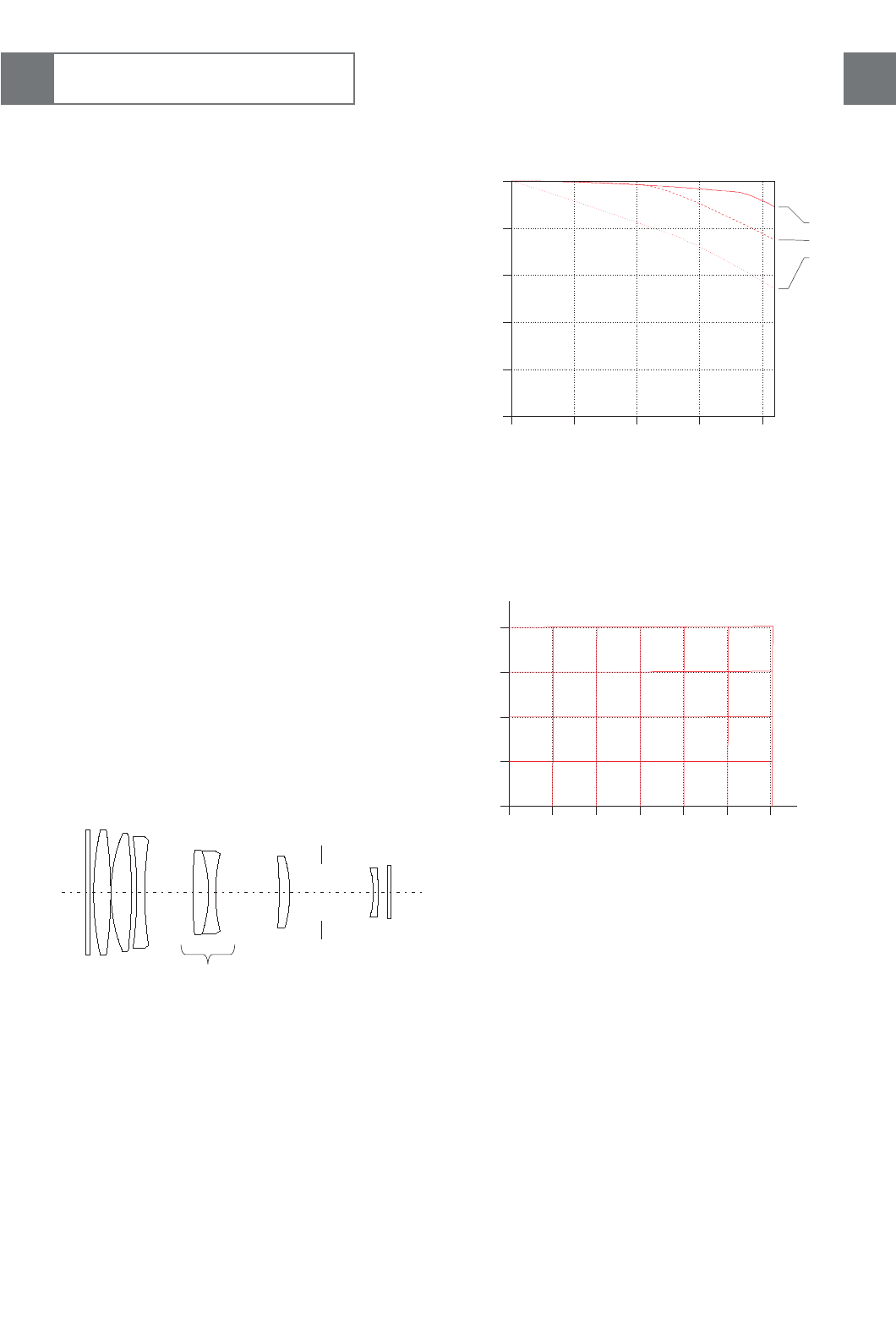
Chapter 3
Leica R-Lenses
7
The diverging curves at 40 Lp/mm for sagittal and tangential
lines is of no relevance in practical photography. This reduction
in contrast can only be computed; it is not visible in real life.
This behavior indicates that the lens earns highest scores for
color correction. The ‘APO’ designation is well deserved. We
should explain this once again: there is no universally accepted
definition for apochromatic correction.
When the secondary spectrum is small and/or when three
wavelengths focus (almost) on one plane, the ‘APO’ designation
is appropriate. The question now is: How do the other wave-
lengths behave and how does the shape of the secondary spec-
trum look as a whole.
The 180 mm f/3.4 Apo-Telyt-R lens is at its optimum at f/5.6,
implying that there are some residual aberrations that disappe-
ar when the lens is stopped down. The often asked question as
to which of these lenses is the best has an easy answer: up to
an aperture of f/4, the Apo-Elmarit-R is the best and more so at
the close-focus range. From f/5.6 both lenses are equal at infi-
nity. But the higher overall correction of the Apo-Elmarit-R
yields images with a crisper and tighter effect.
The 180 mm f/2.8 Apo-Elmarit-R lens can be focused beyond
the infinity mark (as the 280 mm lens can as well). This is inten-
tional in order to accommodate heat expansion and it is not
designed for searching the best infinity position. There is
nothing beyond infinity and the true infinity mark is optically
and mechanically fixed by the factory.
The 280 mm f/4 Apo-Telyt-R lens has a strong family resem-
blance to the 180 mm lens. Here too, seven elements are used,
now in six groups (the first cemented group is separated). Dis-
tortion and vignetting of the two lenses are almost identical.
The telephoto ratio is 0.74 (Focal length/physical length) and
close to that of the 180 mm lens:
A protective filter, positioned in front of the lens, is part of the
optical design and computation.
The possible fear that the filter might reduce the optical perfor-
mance is not justified. As with the 180 mm lens, optimum opti-
cal performance is already reached at full aperture. Microfine
textural details are reproduced with high edge sharpness and
micro contrast, the clarity of the colors and tonal gradation are
exemplary and give the image a special depth impression.
The MTF graphs show superb results and are hardly distinguis-
hable from those of the 180 mm lens.
0 5 10 15 20
Y'[mm]
0
20
40
60
80
100
[%]
4.0
5.6
8.0
0 3 6 9 12 15 18
X'[mm]
0
3
6
9
12
Y'[mm]













